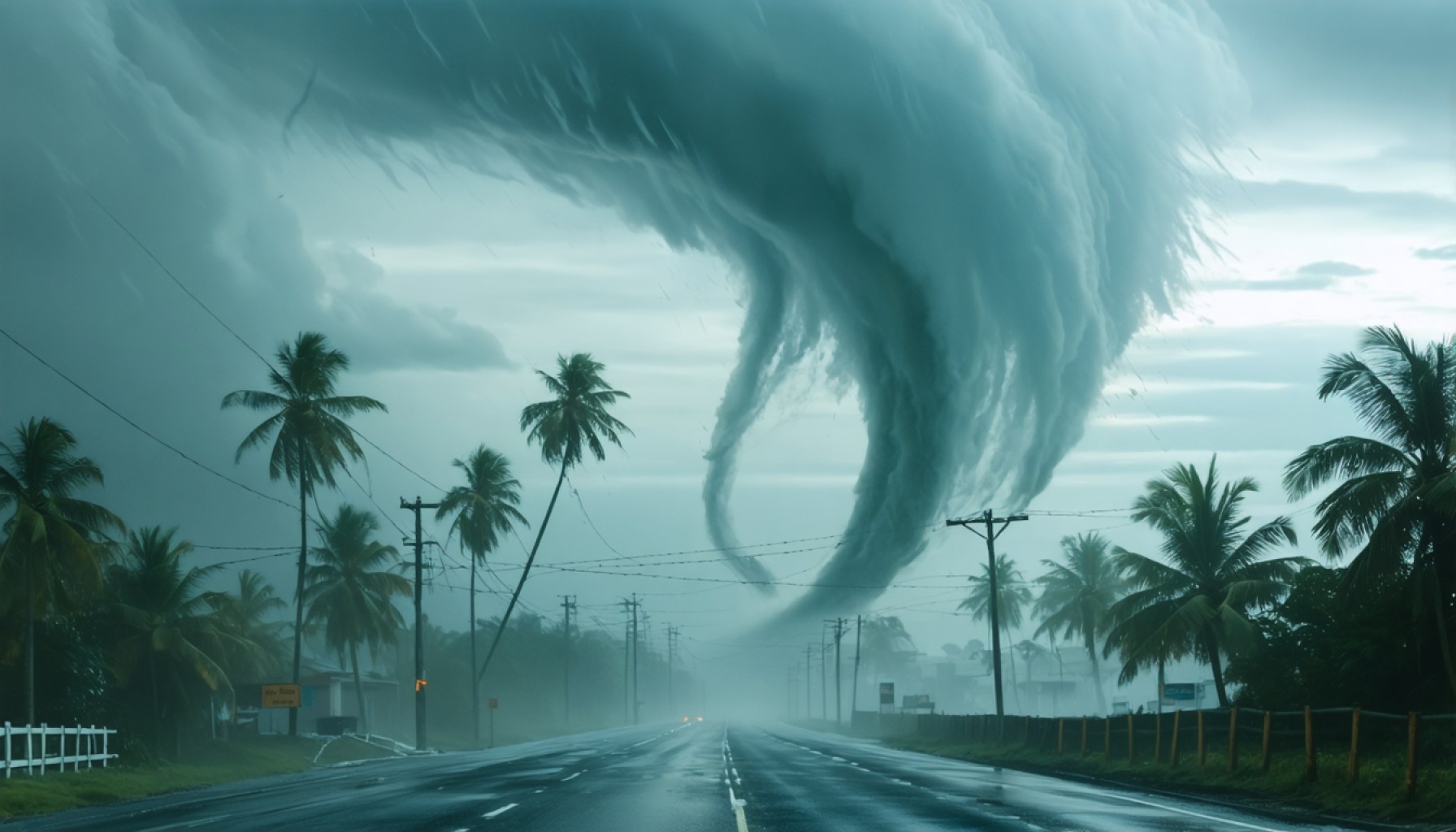- Tropical Cyclone Alfred intensifies to a category three storm in the Coral Sea, heading towards Queensland.
- The cyclone remains 700 kilometers offshore, but its potential impact includes strong winds, heavy rains, and large swells along Queensland’s coast.
- The Bureau of Meteorology encourages vigilance, emphasizing the importance of keeping updated on the cyclone’s trajectory.
- Queensland’s Premier and the State Emergency Service urge residents to secure property and prepare emergency plans.
- Preparedness is key, with residents advised to follow safety guidelines and contact emergency services if needed.
A massive churn in the Coral Sea captures the attention of the Bureau of Meteorology, as Tropical Cyclone Alfred rapidly intensifies. This formidable force now surges towards Queensland, amping up to a category three storm. Yet, from a safe distance east of Willis Island, its true intent remains cloaked in oceanic mystery.
Like a slumbering giant, safely distant yet disturbingly potent, Cyclone Alfred swirls roughly 700 kilometers offshore. Imposing ominous warnings for Queensland’s coastal waters, it breathes strong winds from Townsville to K’gari. As the weekend looms, hints of a dance closer to Queensland’s heart flutter in weather models—whispers of a potential coastal crossing.
The Bureau’s watchful eye stresses vigilance, urging coastal communities to stay updated on the cyclone’s path. Though the cyclone looms eerily offshore, it holds a promise of furious gusts, soaking rains, and towering swells—a tempestuous symphony heralding its approach.
Queensland’s Premier stands resolute, urging preparations akin to fortifying castles against impending siege. Secure those wayward branches, stow tempest-tossed furniture, and weave your emergency plans tightly. Mother Nature’s capricious hand can turn swiftly, a lesson well learned.
State Emergency Service controller Jasper Humphries echoes a familiar refrain: readiness is key. Instructing residents on the merits of swift actions, he calls for an embrace of safety over complacency. As always, a reminder hums in the air—triple-0 for life’s fragility, SES for storm’s wrath.
Cyclone Alfred thus demands respect, a fleeting reminder of nature’s sheer, unyielding power—beckoning us to prepare, and then prepare some more.
Prepare Now! Cyclone Alfred’s Looming Threat: Essential Survival Tips and Latest Updates
How-To Steps & Life Hacks for Cyclone Preparedness
With Cyclone Alfred intensifying into a Category 3 storm, preparation is vital for coastal communities in Queensland. Here’s a step-by-step guide to ensure safety:
1. Secure Your Property: Trim trees and bushes, secure loose items outdoors, and reinforce windows and doors.
2. Create an Emergency Kit: Include essentials such as water, non-perishable food, medications, a flashlight, batteries, a first-aid kit, and important documents in waterproof containers.
3. Plan Your Evacuation Route: Know the safest path to your community shelter or an area at higher ground.
4. Stay Informed: Regularly check updates from reputable sources such as the Bureau of Meteorology.
5. Develop a Communication Plan: Agree on a contact method with family members in case phone lines become disrupted.
Real-World Use Cases: Lessons from Past Cyclones
Historically, cyclones have caused significant damage to coastal communities due to lack of preparation and understanding of their paths. A primary example is Cyclone Ita in 2014, which caused widespread damage despite its offshore location, emphasizing the need for readiness even if the cyclone’s trajectory appears not to directly hit.
Market Forecasts & Industry Trends
The growing intensity and frequency of tropical cyclones have influenced regional insurance industries, leading to increased premiums. According to the Insurance Council of Australia, these changes reflect heightened risk models predicting more frequent severe weather events due to climate change.
Reviews & Comparisons: Cyclone Alfred vs. Other Recent Cyclones
Compared to Cyclone Debbie (2017), which was a Category 4 system, Cyclone Alfred’s current Category 3 status suggests less intense immediate impacts. However, its trajectory and potential for landfall could parallel Debbie in unpredictability, warranting equal caution and preparedness.
Controversies & Limitations: Monitoring and Predictive Challenges
Forecasting tropical cyclones remains challenging due to factors like oceanic conditions and atmospheric variability. Critics argue the need for improved predictive models to enhance accuracy and update frequency, especially for communities heavily impacted by cyclones.
Features, Specs & Pricing of Weather Monitoring Technologies
Weather radar systems like Doppler Radar and satellite technologies help meteorologists observe and forecast cyclones. These systems cost millions and are integral for accurate forecasting. Investing in advanced systems ensures timely warnings and improved predictive capabilities.
Security & Sustainability Considerations
Communities must secure infrastructure to minimize cyclone impacts. Sustainable building designs and materials that withstand cyclonic conditions are increasingly adopted. These measures not only protect lives and property but also promote long-term resilience.
Insights & Predictions: The Future of Cyclone Monitoring
Emerging AI technologies and machine learning are poised to revolutionize cyclone monitoring by enhancing predictive accuracy, enabling quicker response times, and providing personalized impact forecasts.
Tutorials & Compatibility with Emergency Management Apps
Emergency management apps offer real-time alerts and communication tools. Key features include localized alerts, shelter locations, and safety tips. Compatibility with various mobile platforms ensures widespread access to vital information.
Pros & Cons Overview
Pros:
– Early warnings save lives.
– Technological advancements improve safety measures and forecasting.
Cons:
– Unpredictable trajectories can lead to inadequate preparedness.
– Higher insurance premiums impact affordability for residents in cyclone-prone areas.
Conclusion: Actionable Recommendations
Residents in cyclone-prone areas should:
– Regularly update emergency kits and plans.
– Participate in community awareness programs.
– Leverage technology for real-time updates and personalized warnings.
By preparing in advance and staying informed, communities can better defend against the power and unpredictability of Cyclone Alfred and future cyclonic threats.
